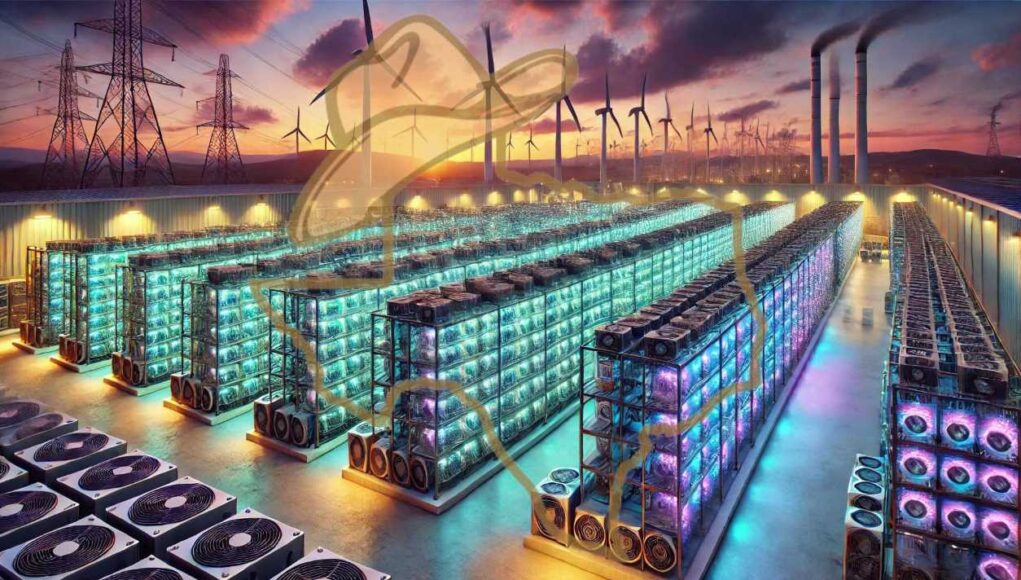Bitcoin mining has emerged as both a savior and a challenge for Texas. The industry has contributed to stabilizing the state’s power grid, saving an estimated $18 billion in infrastructure costs. Still, concerns about its environmental impact and regulatory oversight persist. With miners now required to register with ERCOT and growing investments in renewable energy, is Texas finding the right balance between innovation and responsibility?
Economic Benefits: Stabilizing the Grid and Saving Billions
Bitcoin mining’s role in stabilizing Texas’s power grid is one of its most significant contributions. According to recent studies, the industry’s ability to participate in demand response programs has saved the state approximately $18 billion in potential infrastructure costs. By quickly reducing their energy consumption during peak demand periods, miners act as a flexible alternative to traditional gas peaker plants, ensuring grid stability during extreme weather events or power surges.
This economic boon is further bolstered by the job creation and local investments brought by mining operations. Towns like Rockdale and Granbury, once reliant on manufacturing and oil, have seen renewed economic activity thanks to the influx of cryptocurrency miners. However, this rapid growth is not without its challenges.
Environmental Concerns: A Mixed Bag
While the economic impact is evident, Bitcoin mining’s environmental footprint has sparked significant debate. Critics point to the high energy consumption associated with mining operations, which often rely on fossil fuels in states like Texas. This reliance exacerbates carbon emissions, raising questions about the industry’s long-term sustainability.
However, some mining companies are taking steps toward greener operations. Marathon Digital Holdings recently acquired a 114-megawatt wind farm in Hansford County, signaling a shift toward renewable energy. This move could serve as a blueprint for other miners aiming to reduce their environmental impact. Despite such initiatives, the broader industry remains scrutinized for its energy usage and potential harm to local ecosystems.
>>> Read more: US Probes Crypto Mining Environmental Impact
Regulatory Oversight: Balancing Innovation and Responsibility
In response to growing concerns about energy consumption and grid stability, the Texas Public Utility Commission now requires mining facilities consuming over 75 megawatts to register with ERCOT, the state’s electric grid operator. This regulation aims to provide greater oversight and ensure that mining operations do not compromise grid reliability.
Proponents of the new measures argue that they bring much-needed transparency to an industry with substantial energy demands. Critics, however, fear that excessive regulation could stifle innovation and discourage investment in the state. As Texas positions itself as a global hub for Bitcoin mining, finding the right balance between fostering innovation and addressing community concerns remains critical.
The Path Forward: Balancing Benefits and Drawbacks
Texas stands at the forefront of a global debate on the role of Bitcoin mining in modern economies. The industry’s ability to stabilize the power grid and generate economic benefits is undeniable. Yet, its environmental and regulatory challenges underscore the need for a thoughtful approach to its growth.
By embracing renewable energy solutions and implementing balanced regulations, Texas has the potential to lead the way in sustainable Bitcoin mining. However, without continued innovation and accountability, the industry risks becoming an environmental and social liability.
>>> Read more: Bern Studies Bitcoin Mining to Use Surplus Energy
Bitcoin mining in Texas represents a microcosm of the broader cryptocurrency industry: a dynamic interplay of economic opportunity, technological innovation, and environmental responsibility. As the Lone Star State navigates this complex landscape, its decisions will likely set a precedent for other regions grappling with similar challenges. Whether Texas emerges as a model for sustainable mining or a cautionary tale will depend on its ability to strike the right balance between progress and prudence.
Readers’ frequently asked questions
How exactly does Bitcoin mining help stabilize Texas’s power grid?
Bitcoin mining operations participate in demand response programs. They can adjust their power consumption based on the state’s electricity needs. During peak demand periods – such as extreme heatwaves or winter storms – miners can voluntarily or contractually reduce their energy usage to free up electricity for households and businesses. This flexibility is a buffer for the grid. It prevents blackouts and reduces the need for expensive emergency power solutions like gas peaker plants. Without Bitcoin mining, Texas would have to invest billions in additional infrastructure to maintain grid stability. The industry became a cost-saving mechanism for the state’s energy system.
Does Bitcoin mining in Texas primarily rely on fossil fuels, or is renewable energy playing a bigger role?
Texas has a diverse energy mix, and Bitcoin miners take advantage of both fossil fuels and renewables. The state leads the U.S. in wind energy production and has significant solar capacity, which some mining companies are increasingly using. For example, Marathon Digital Holdings has acquired a 114-megawatt wind farm to power its operations. However, many mining facilities still rely on natural gas, particularly in regions with less developed renewable infrastructure. The industry is moving toward greener solutions, but fossil fuels remain a significant part of its energy consumption due to Texas’s overall energy landscape.
Why is the Texas government regulating Bitcoin mining, and how might this impact the industry?
The Texas Public Utility Commission now requires large-scale Bitcoin miners (those consuming over 75 megawatts) to register with ERCOT, the state’s electric grid operator. This regulation ensures transparency, allowing authorities to track mining operations and assess their impact on electricity demand. Supporters believe this oversight will prevent sudden energy shortages and make mining more predictable. However, critics worry that additional regulations could discourage companies from operating in Texas, potentially slowing investment and job creation. The long-term impact depends on how these rules are enforced and whether they balance oversight and industry growth.
What Is In It For You? Action Items You Might Want to Consider
Monitor Energy-Based Crypto Regulations in Texas
If you’re trading Bitcoin or investing in mining-related assets, keep a close eye on Texas’s evolving regulatory landscape. The new requirement for miners to register with ERCOT could impact mining profitability, energy costs, and, ultimately, Bitcoin’s hash rate. A more regulated mining environment might lead to increased operational costs, which could influence BTC supply dynamics. Stay informed and adjust your trading strategy accordingly.
Watch for Renewable Energy Adoption in Mining
Texas-based mining companies are gradually shifting toward renewable energy, with major players like Marathon Digital investing in wind-powered facilities. If this trend accelerates, it could improve Bitcoin’s public perception and attract institutional investors focused on ESG-friendly assets. Keep an eye on news related to sustainable mining. Greater adoption of renewables might boost Bitcoin’s long-term viability and influence price stability.
Leverage Grid-Linked Bitcoin Price Movements
Bitcoin mining in Texas plays a role in stabilizing the power grid, but extreme weather events still pose risks. During peak demand periods, miners may scale down operations, affecting Bitcoin’s hash rate and potentially leading to short-term price fluctuations. If you’re trading BTC, monitor Texas energy demand and weather patterns. Unexpected power restrictions could create temporary market opportunities or volatility spikes.










